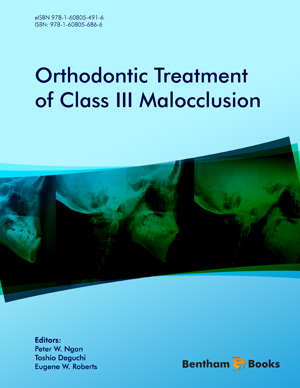Abstract
Early orthopedic treatment of skeletal malocclusions continues to challenge clinicians and the efficacy of mandibular growth modification by orthopedic appliances has long been a debate without conclusion. Several growth theories support the mandibular condyle as a growth site rather than a primary growth center. The response of cartilages and chondrocytes to mechanical stimulation is still considered a major parameter for controlling the growth of mandible. This chapter summarizes results of laboratory and clinical studies related to orthopedic interventions, focused on mandibular prognathism. The clinical problems with chincup therapy are discussed at the cellular level and with animal models. Based on the results from animal model studies, the magnitude and direction of the mechanical stress is analyzed relative to loading cells. Differentiating chondrocytes appear to be the effectors of the cellular physiologic and the pathologic reactions to mechanical stress. The possible mechanotransduction pathways in differentiating chondrocytes are discussed relative to cellextracelluler matrix (ECM) adhesion and ion channels. A combined signal transduction mechanism is proposed for integrin based cell-ECM adhesion, This mechanism, acting through a mitogen activated protein kinase (MAPK) pathway mediated by ion channels, is discussed as a possible mechanism for regulating mandibular growth. The promotion of endochondral bone formation in the mandibular condylar cartilage is proposed as an important example of this basic mechanism. Further horizons for craniofacial research in orthodontics and mechanobiology are proposed.
Keywords: Mandibular condylar cartilage, Mechanobiology, Cell-ECM adhesion, MAPK pathway, Orthopedic intervention.






















